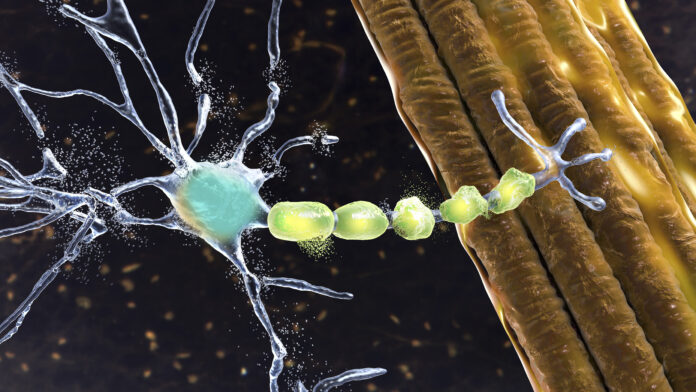May is Hepatitis Awareness Month, an annual campaign to raise awareness for viral hepatitis and its impact in the U.S. — and a month-long opening to address the importance of vaccination and testing for viral hepatitis with your patients.
In recognition of the ongoing fight against hepatitis, on Thursday, President Joe Biden declared May 19 as National Hepatitis Testing Day.

“Thousands of Americans die every year of viral hepatitis — infections of the liver that can be managed or cured if patients know they are infected and can get treatment,” he wrote in a presidential proclamation. “On National Hepatitis Testing Day, we urge Americans to get tested and recommit to ensuring that those who are diagnosed can receive lifesaving care.”

Joe Biden
According to the CDC, the most common viruses that cause hepatitis are hepatitis A, B and C with hepatitis B and C being leading causes of liver cancer in the U.S. Approximately 862,000 people are living with hepatitis B and 2.4 million people are living with hepatitis C in the U.S., according to the U.S. Department of Health and Human Services.
Both hepatitis A and hepatitis B are preventable through vaccines, which is why the CDC recommends that all adults up to 59 years get tested and vaccinated. Women who are pregnant should also get tested. Additionally, hepatitis C may be cured with prescribed treatments.
“Working to beat hepatitis is something that all Americans can agree is important,” Biden wrote. “Every American can do their part — ask your health care provider about getting tested for hepatitis B and C and about being vaccinated for hepatitis B if you have not yet done so. And ask the Congress to back our push to eliminate the threat of viral hepatitis from the United States for good.”
The CDC offers educational campaigns, “Know More Hepatitis” and “Know Hepatitis B” to increase testing of hepatitis C among all adults and hepatitis B among Asian Americans and Pacific Islanders. To do our part to help raise awareness, Healio has compiled a list of the latest news on viral hepatitis.
Adenovirus re-emerges as likely culprit in 2022 outbreak of acute hepatitis in children
A 2022 outbreak of unexplained acute severe hepatitis in children has been linked to a strain of adeno-associated virus 2, supporting the theory that disease pathogenesis results from viral coinfection, according to data reported in Nature.
Since October 2021, more than 1,300 children in 35 countries have developed acute severe hepatitis of unknown etiology, with the United States and the United Kingdom accounting for 65% of global cases, according to recent WHO data. Read more.
HCV elimination represents ‘win-win-win’ for patients, public health, cost savings
Every year nearly 3 million patients are diagnosed with hepatitis B and C infections, ultimately leading to 1.1 million deaths worldwide, WHO reported.
In response to this immense public health burden, WHO and other international organizations have developed goals and plans for elimination. Although implemented by most countries with many on track to reach their goals, analyses have revealed a persistent reservoir of chronic hepatitis viruses and new infections remain a threat, Sheikh Mohammad Fazle Akbar, MD, PhD, and colleagues wrote in Infectious Diseases & Immunity.
In the U.S., only 6% of states are on track to achieve HCV elimination by 2030, according to a 2020 report by Mark Sulkowski, MD, and colleagues. Researchers further reported 35% of states are not expected to meet their margins by 2040. Read more.
Women, younger injection drug users have a higher risk for HIV, HCV
Results from a systematic review and meta-analysis demonstrated greater risk for hepatitis C virus and HIV infection among women and younger people who inject drugs, according to data reported in The Lancet Gastroenterology & Hepatology.
“Globally, around 18% of people who inject drugs (PWID) are living with HIV and more than 50% have been infected with HCV,” Adelina Artenie, PhD, of the department of population health sciences at Bristol Medical School in the United Kingdom, and colleagues wrote. “Over the past two decades, the incidence rates of HIV and HCV have declined among PWID in some high-income countries (HICs). … Meanwhile, persistently high levels or outbreaks of HIV and HCV among PWID have been reported in other HICs and low-income or middle-income countries (LMICs).” Read more.
Study highlights ‘substantial need’ to provide DAA therapy to all patients with HCV
Direct-acting antiviral treatment significantly lowered the risk for mortality and liver and non-liver outcomes in patients with chronic hepatitis C virus infection, regardless of disease stage, researchers reported.
“Since 2014, major improvements have been made in therapies for HCV, most notably direct-acting antiviral agents,” Eiichi Ogawa, MD, PhD, of the department of general internal medicine at Kyushu University Hospital in Japan, and colleagues wrote in JAMA Internal Medicine. “HCV elimination by DAAs has been associated with significant reductions in the risk of certain non-liver diseases such as diabetes. Read more.
FDA rejects Gilead’s bulevirtide for hepatitis D, compensated liver disease
The FDA issued a complete response letter to Gilead indicating it cannot approve the company’s new drug application that seeks approval of bulevirtide for chronic hepatitis D virus infection and compensated liver disease.
In its letter, the FDA cited concerns over the manufacture and delivery of bulevirtide, a first-in-class investigational entry-inhibitor; however, no new studies to assess the safety and efficacy of the drug have been requested. Read more.
No ‘singular definitive etiology’ found for acute hepatitis outbreak in children
Although adenovirus infection has been widely implicated in an outbreak of acute, severe hepatitis in children, data presented at The Liver Meeting found no “singular definitive etiology” for these cases.
“Beginning in October 2021, there were multiple clusters identified across the world of young children having a severe acute hepatitis and liver failure,” Rohit Kohli, MD, division chief of gastroenterology at the Children’s Hospital Los Angeles, University of Southern California, said during the presentation. “Some, unfortunately, progressed to liver failure, needing liver transplantation or death, and at that time, there were alarm bells ringing at the CDC and WHO. However, beyond these local reports, we didn’t understand completely what was going on as a community.” Read more.
‘We need your help’: AASLD support, outreach key to success of HCV elimination program
WASHINGTON — An expert panel of physicians, researchers and scientific advisers called upon The Liver Meeting attendees to support a proposed national HCV elimination program in the US.
“We don’t get to use the word ‘eliminate’ all that often with a disease that is taking thousands or tens of thousands or, worldwide, hundreds of thousands of lives every year,” Francis S. Collins, MD, PhD, former director of NIH and acting science adviser for President Joe Biden, said. “But we have that opportunity with hepatitis C.” Read more.
Diabetes, hepatitis C predict higher risk for alcohol-associated liver disease
Patients with alcohol use disorder and diabetes mellitus or hepatitis C were at higher risk for advanced liver disease, while African American race had a protective effect, according to late-breaking data at The Liver Meeting.
The prevalence of alcohol use disorder (AUD) in the U.S. is approximately 30 million, with 95,000 deaths per year and an annual cost of $250 billion, Amir Gougol, MD, a transplant hepatology fellow at the University of California, San Francisco, told attendees. It is the No. 1 indication for liver transplant in both the U.S. and Europe, with a progressive rise in incidence of alcoholic liver disease. Read more.
FDA expands Vemlidy approval for chronic HBV in children aged older than 12 years
The FDA has updated the label indication for 25 mg tenofovir alafenamide for the treatment of chronic hepatitis B virus with compensated liver disease, expanding the patient population to include children aged 12 years older.
Vemlidy (tenofovir alafenamide, Gilead Sciences) — a nucleoside analog reverse transcriptase inhibitor — was previously approved for the adult population in 2016, when it eclipsed the higher-dose Viread (tenofovir disoproxil fumarate, Gilead Sciences) as an effective treatment. Read more.
References:









